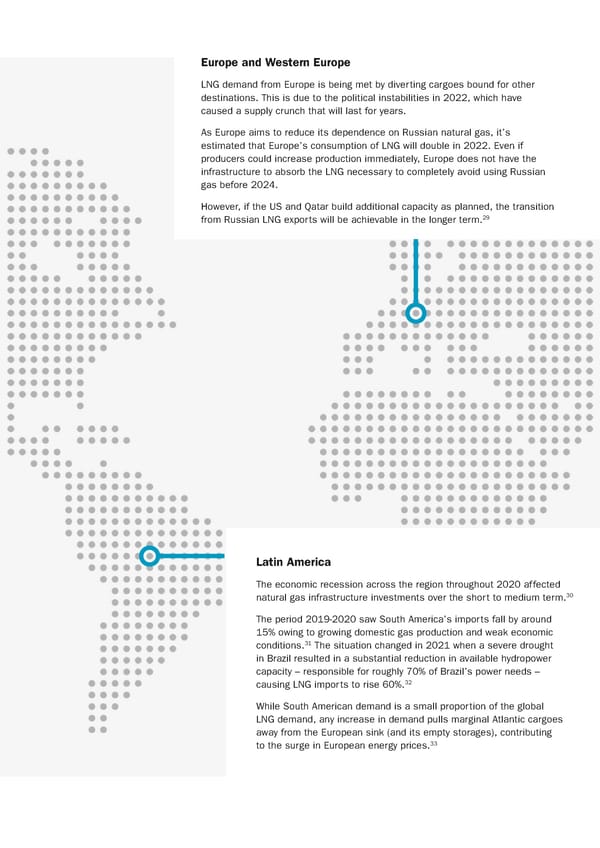Europe and Western Europe LNG demand from Europe is being met by diverting cargoes bound for other destinations. This is due to the political instabilities in 2022, which have caused a supply crunch that will last for years. As Europe aims to reduce its dependence on Russian natural gas, it’s estimated that Europe’s consumption of LNG will double in 2022. Even if producers could increase production immediately, Europe does not have the infrastructure to absorb the LNG necessary to completely avoid using Russian gas before 2024. However, if the US and Qatar build additional capacity as planned, the transition 29 from Russian LNG exports will be achievable in the longer term. Latin America The economic recession across the region throughout 2020 affected 30 natural gas infrastructure investments over the short to medium term. The period 2019-2020 saw South America’s imports fall by around 15% owing to growing domestic gas production and weak economic 31 conditions. The situation changed in 2021 when a severe drought in Brazil resulted in a substantial reduction in available hydropower capacity – responsible for roughly 70% of Brazil’s power needs – causing LNG imports to rise 60%.32 While South American demand is a small proportion of the global LNG demand, any increase in demand pulls marginal Atlantic cargoes away from the European sink (and its empty storages), contributing to the surge in European energy prices.33
 TM&I LNG Flexibility Factor Report Page 9 Page 11
TM&I LNG Flexibility Factor Report Page 9 Page 11